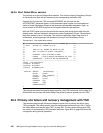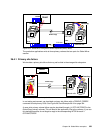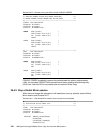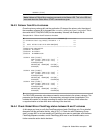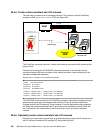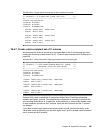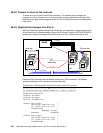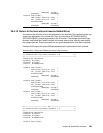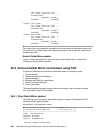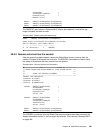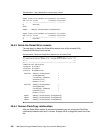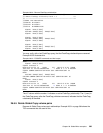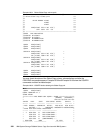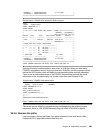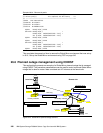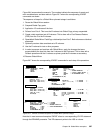
360 IBM System Storage DS6000 Series: Copy Services with IBM System z
PRIM (X'2C00' 27131 X'00' X'0C') +
SEC (X'3C00' 73081 X'00' X'0C') +
ACTION(FAILBACK) +
MSGREQ(NO) CRIT(NO) +
OPTION(XD) CASCADE(NO)
CESTPAIR DEVN (X'2D00') +
SEC (X'3D00' 73081 X'00' X'0D') +
PRIM (X'2D00' 27131 X'00' X'0D') +
ACTION(FAILBACK) +
MSGREQ(NO) CRIT(NO) +
OPTION(XD) CASCADE(NO)
CESTPAIR DEVN (X'2D01') +
SEC (X'3D00' 73081 X'01' X'0D') +
PRIM (X'2D00' 27131 X'01' X'0D') +
ACTION(FAILBACK) +
MSGREQ(NO) CRIT(NO) +
OPTION(XD) CASCADE(NO)
From now on the normal operation is restored, and as the production applications resume the
I/O at the local site, Global Copy will be replicating the data to the remote site, as before the
site failure occurred.
Restart Global Mirror session
Finally, to restore everything as it was, you need to restart Global Mirror to resume the
Consistency Group formation process.
26.5 Remove Global Mirror environment using TSO
To remove a Global Mirror environment, follow these steps in the following order:
1. Stop the session.
2. Remove volumes from the session.
3. Delete the session.
4. Withdraw the FlashCopy relationships.
5. Delete the Global Copy pairs.
6. Remove the paths.
The following sections go step-by-step through this procedure, and show how to execute
each of the steps using TSO commands.
26.5.1 Stop Global Mirror session
The first thing to do is to stop the Global Mirror session. Example 26-24 shows the TSO
command used to stop the session.
Example 26-24 Stop Global Mirror session
//* ------------------ TSO -------------------- CLEANUP (1) ------ ***
//* Terminate GM session number X'01' first thing to do ***
//* -------------------------------------------------------------- ***
//TERM EXEC PGM=IKJEFT01
//SYSPRINT DD SYSOUT=*
//SYSTSPRT DD SYSOUT=*
//SYSTSIN DD DDNAME=SYSIN
RSESSION SNBR(01) VOLSER(XX2C00) +



